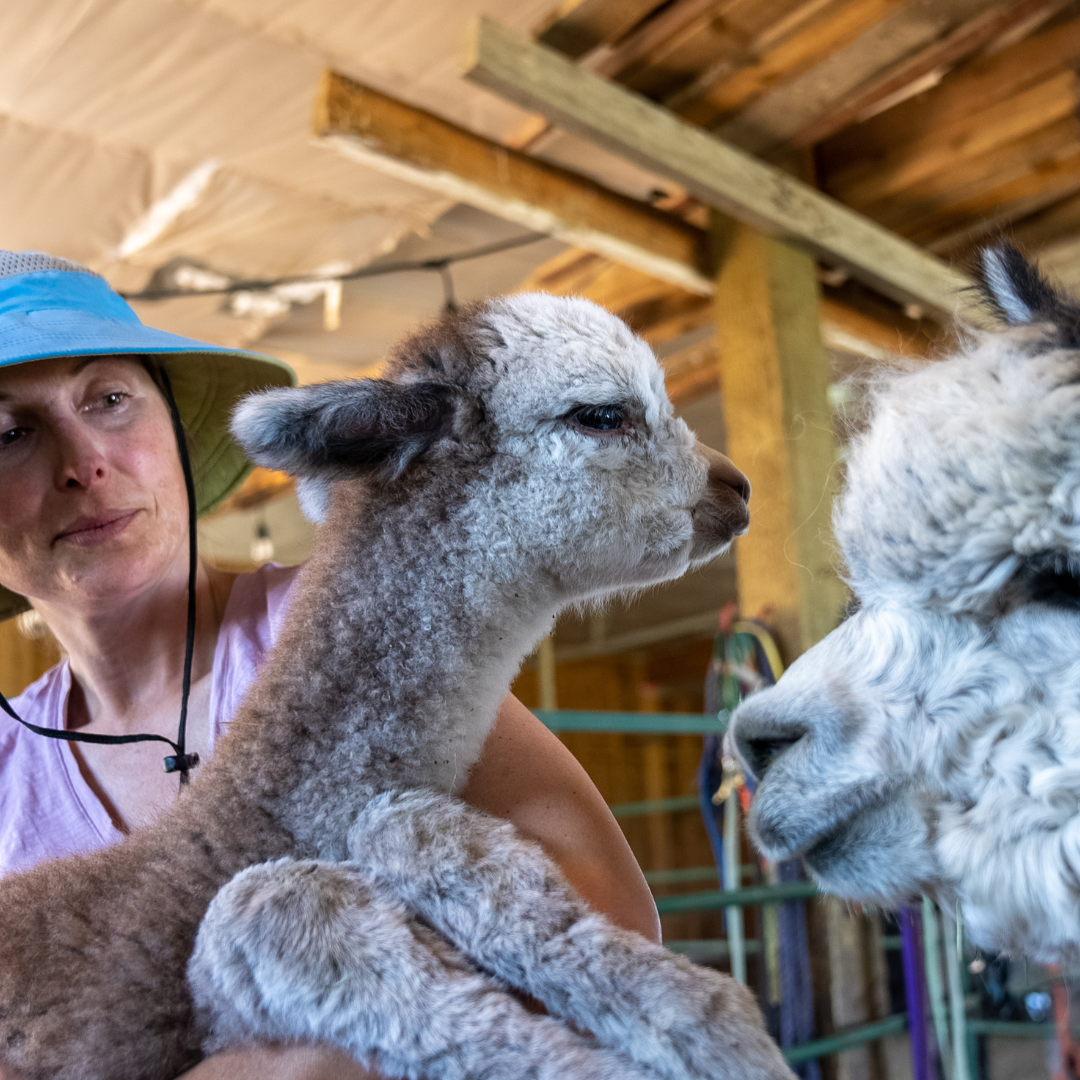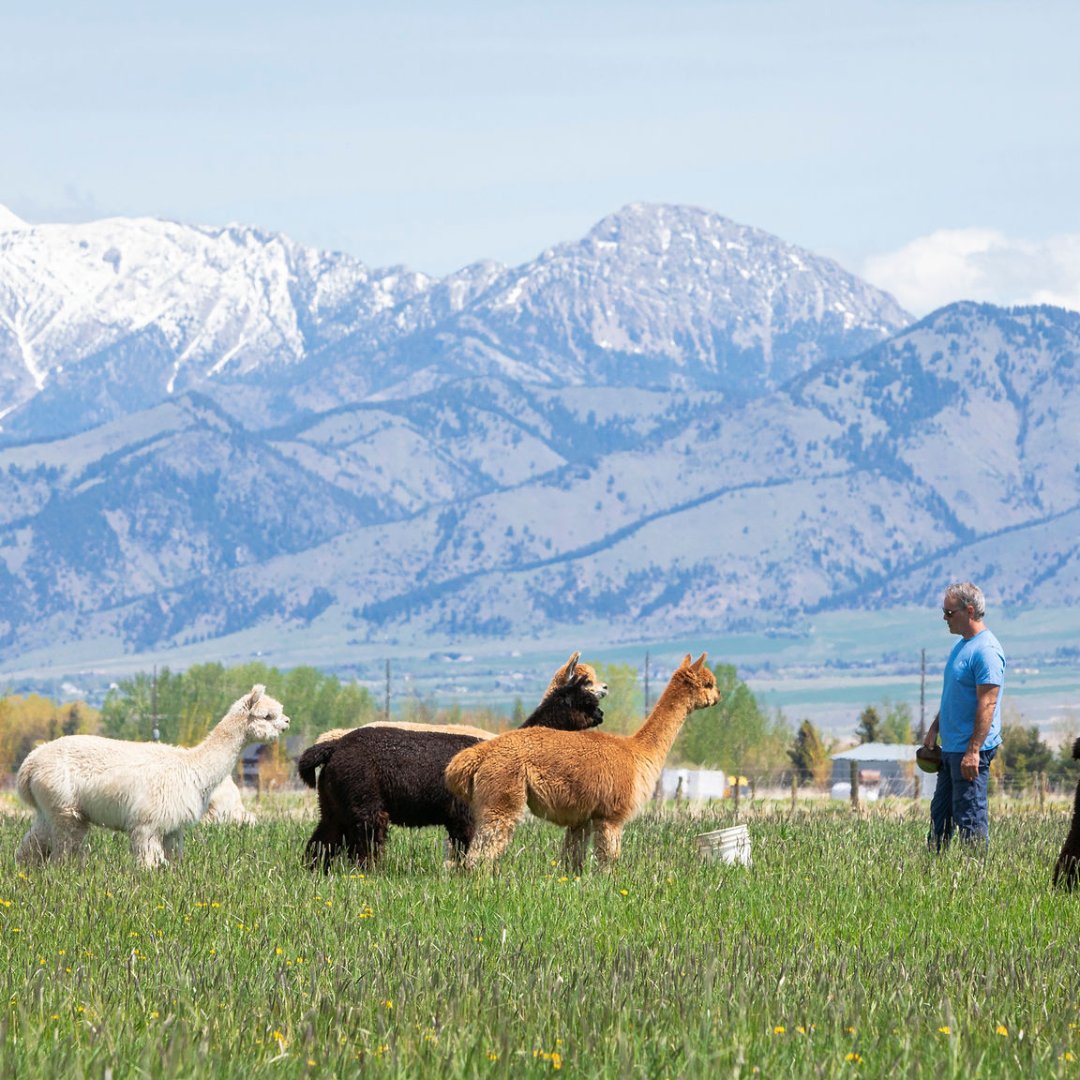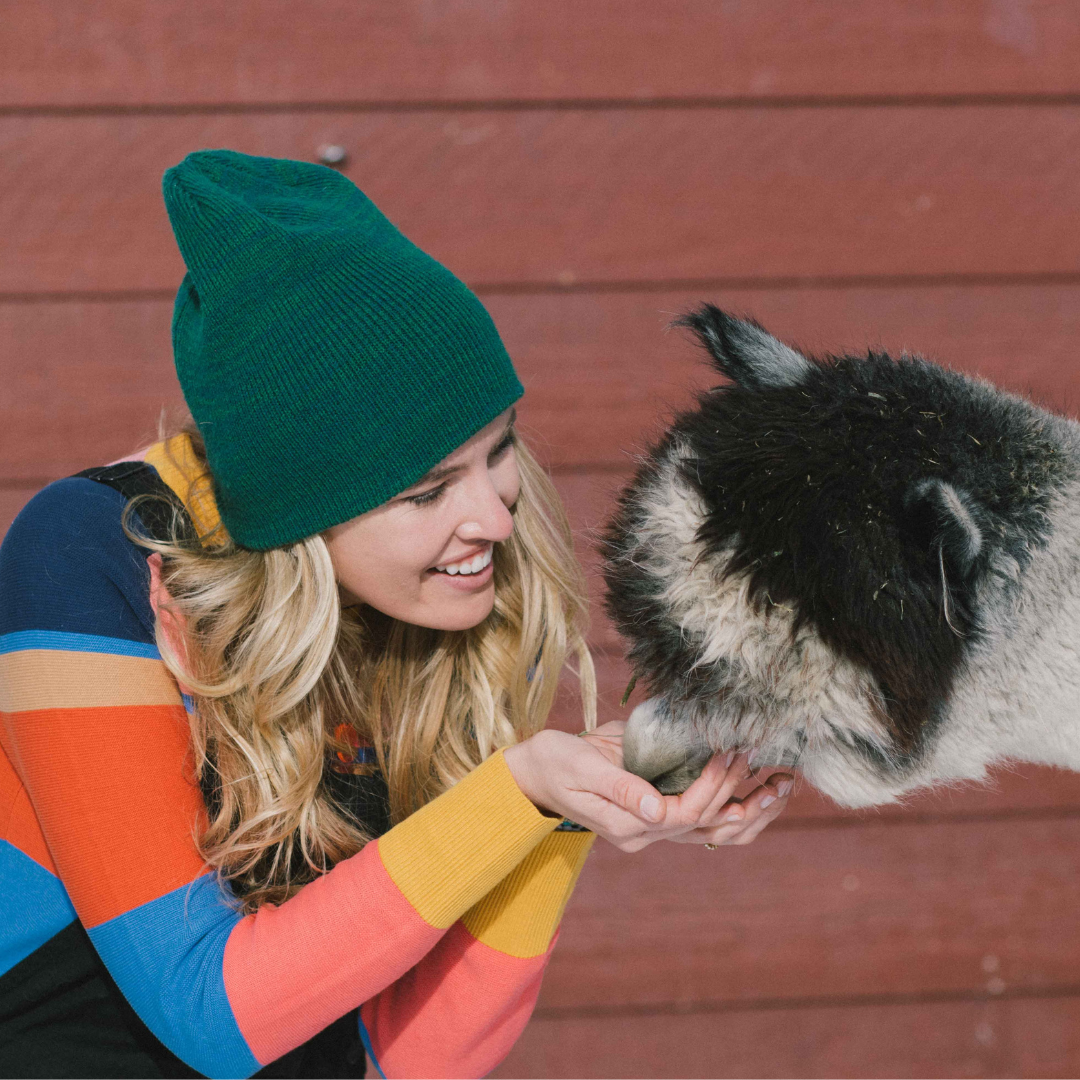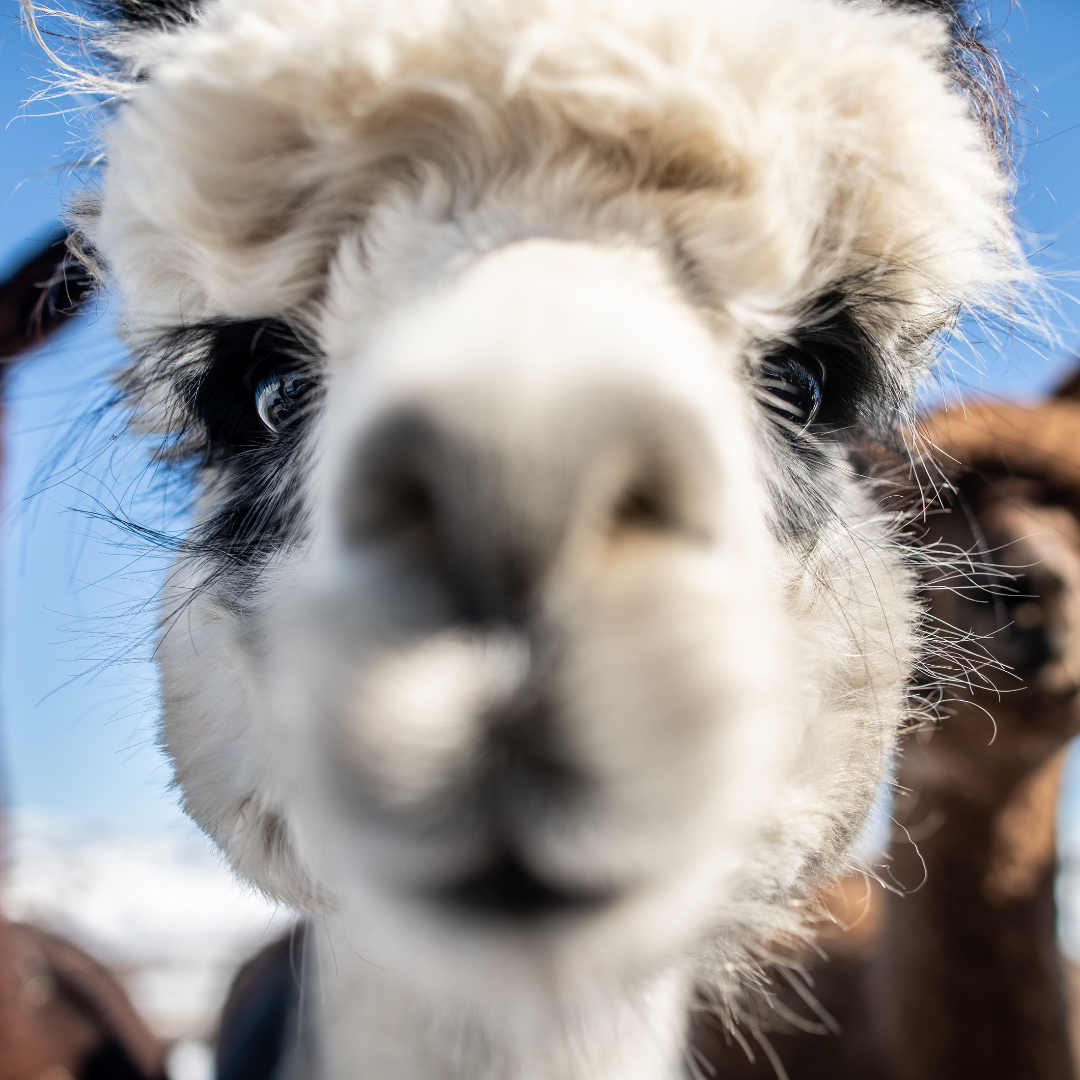A good place to start is to define the goals of the dam to be serviced. This will limit the search time and focus attention on the breeding plan. Instead of fixating on a well-advertised name stud, focus on breeding goals which will keep you on track with your real objectives. Here are some things to factor into the search.
Location - How far and at what cost are you willing to transport your dam (and cria at the side) for a breeding? How comfortable are you leaving dam and cria for at least 60 days or more at a remote location that you may not have even visited? Once the dam is bred, you have the reverse trip, now for a newly pregnant dam and cria. How risk tolerant or flexible are you for this transport stress? If you the perfect Mr. Right Stud is located 3,000 miles away, you might want to consider a closer Mr. Almost-Right Stud.
Characteristics - if you are looking for a particular color, that narrows the choices. If you have a fiber goal in mind ( a low-micron dam who needs fiber density in a stud), that also narrows the choices. If your dam is a bit smaller or larger than you would prefer, you might consider stud size. Find things to be improved from the dam to the cria and look for the male to provide the improvement.
 Awards - Many dam owners want studs that have multiple awards from AOBA certified shows with different judges. Having a stud that also has prizes in Get-of-Sire competition is also sought after. This helps in selling the dam or her eventual cria, but prizes are not absolutely necessary to get a really quality stud. Price will usually be higher for prize winners and their crias may be more valuable, but many other studs have very good qualities.
Awards - Many dam owners want studs that have multiple awards from AOBA certified shows with different judges. Having a stud that also has prizes in Get-of-Sire competition is also sought after. This helps in selling the dam or her eventual cria, but prizes are not absolutely necessary to get a really quality stud. Price will usually be higher for prize winners and their crias may be more valuable, but many other studs have very good qualities.
Breeding fee - If price is no object, skip the next paragraph. On the other hand, most of us have limits on price and that limit should be one the criteria. There are some very nice, very expensive studs available, but if your goal is to get the best available stud at a certain breeding fee, you can find some splendid studs for less $2,000.
 With a shopping list of requirements in hand, the search can begin. Talking with fellow breeders is a good place to start and may just turn up the right stud for you. However, I would also recommend some independent research. The Internet is a great place to look. It's cheap, offers instant information and it is time well worth spending. Check the listing of your local and surrounding alpaca associations and visit the web sites of the listed farms. Take notes and keep on looking. Another, faster way to look is search one of the sites that breeders and organization use to post their alpacas. These sites usually have an efficient search engine that you can use to search by your criteria. If you haven't tried it, you may be amazed by the amount of quality information there is available, all without leaving the house.
With a shopping list of requirements in hand, the search can begin. Talking with fellow breeders is a good place to start and may just turn up the right stud for you. However, I would also recommend some independent research. The Internet is a great place to look. It's cheap, offers instant information and it is time well worth spending. Check the listing of your local and surrounding alpaca associations and visit the web sites of the listed farms. Take notes and keep on looking. Another, faster way to look is search one of the sites that breeders and organization use to post their alpacas. These sites usually have an efficient search engine that you can use to search by your criteria. If you haven't tried it, you may be amazed by the amount of quality information there is available, all without leaving the house.
The posted information needs to be verified once you have honed in on a few possible select studs, but at this point you have come a long way.
Don't neglect the Herd Sire edition of Alpacas Magazine. The advertisements are a great source of information, plus the pictures are clear and give you a great visual impression of the advertised studs.
Having spent this much time and effort at it, you still need to take the last step, especially if the stud is relatively unknown - you need to get hands-on with the stud or studs. Go to his home farm.
- Feel his fiber
- Ask for a histogram,
- Ask questions about his breedings
- Judge his temperament
- Check his teeth
- Check his testicles for size and texture
- Run your hand down his spine all the way to the end of his tail to check for misalignment
- Look at any available cria and the dams they were bred to to produce the cria. If you need multiple breedings, ask for a discount for two or more breedings. (Can't hurt to ask.)
- Ask for a copy of the stud's breeding contract and the terms - take time to read it off the farm
- Get a copy of his ARI certificate
Ask the breeder what the breeding plan is - breed one and then again on the second day? Breed once and then again on the third days? Seventh or eighth day? How will they preg test - through spitting and/ or blood draw and/ or ultra-sound? Who will pay for it?
As the last step before deciding on your dram match, go to the ARI web site and look at information about the stud. Look in particular at his cria list. If you are suri breeder, see how many huacaya crias he has through and if there are huacayas in his background. Check the color of his crias, when they were born, male or female, etc. Also do a sanity check on how long he has been breeding and how many crias are registered. If he has been breeding for three years and has only a few crias listed, that s something worth looking into.
Follow the trail of the ARI numbers to check out his antecedents and see if there are any common family members with your dam. The more you know about the stud, the better.
There isn't a formula in deciding on a stud, but the better informed you are, the fewer surprises you will have and the better you are equipped to make the next decisions for your breeding program on the way to success as a knowledgeable alpaca breeder.
























































































